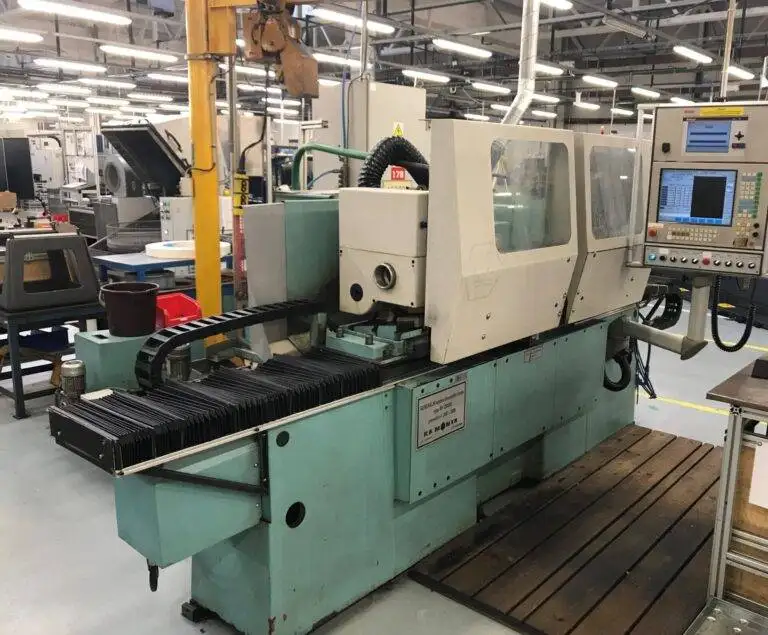Advanced high-speed networks in industry 4.0
Advanced High-Speed Networks in Industry 4.0
In the era of Industry 4.0, advanced high-speed networks play a crucial role in transforming traditional manufacturing processes into smart, efficient, and interconnected systems. With the rapid advancements in technology, these networks have become the backbone of various industries, enabling seamless communication, data exchange, and real-time decision-making. This article explores the significance of advanced high-speed networks in Industry 4.0 and how they revolutionize manufacturing and other sectors.
Introduction to Industry 4.0
Industry 4.0, also known as the fourth industrial revolution, refers to the integration of digital technologies into traditional manufacturing processes. It encompasses various cutting-edge technologies such as the Internet of Things (IoT), artificial intelligence (AI), cloud computing, big data analytics, and robotics. The primary goal of Industry 4.0 is to create smart factories that are highly efficient, flexible, and capable of self-optimization.
The Role of Advanced High-Speed Networks
Advanced high-speed networks form the backbone of Industry 4.0, as they provide the infrastructure necessary for seamless connectivity and data exchange. These networks enable devices, machines, and systems to communicate with each other, creating an interconnected ecosystem where information flows swiftly and securely. Here are some key roles played by advanced high-speed networks in Industry 4.0:
1. Real-time Communication and Collaboration
With the help of advanced high-speed networks, devices and machines can communicate and collaborate in real time, allowing for efficient coordination and synchronization within the manufacturing processes. Real-time data exchange enhances productivity, reduces downtime, and enables faster decision-making.
2. Internet of Things (IoT) Integration
IoT devices, sensors, and actuators are integral components of Industry 4.0, generating a vast amount of data that needs to be transmitted and analyzed in real time. Advanced high-speed networks ensure smooth integration and communication between these IoT devices, creating a network of intelligent, interconnected devices that work together to optimize operations.
3. Big Data Analytics and Predictive Maintenance
The enormous volume of data generated in Industry 4.0 requires advanced analytics for meaningful insights. High-speed networks facilitate the collection, transmission, and analysis of this data, enabling businesses to gain valuable insights into their operations, improve efficiency, and implement predictive maintenance strategies to prevent costly equipment breakdowns.
4. Cybersecurity and Data Protection
As Industry 4.0 involves the interconnection of numerous devices, security becomes a critical concern. Advanced high-speed networks employ robust security measures to protect sensitive data and ensure the integrity and confidentiality of information flowing across the network. This ensures that critical infrastructure and intellectual property remain secure from potential cyber threats.
5. Enhanced Supply Chain Management
The integration of advanced high-speed networks in Industry 4.0 extends beyond individual factories. It facilitates the integration of supply chains, enabling real-time communication and collaboration between suppliers, manufacturers, and distributors. This seamless flow of information enhances supply chain visibility, reduces lead times, and enables efficient inventory management.
6. Increased Automation and Robotics
Advanced high-speed networks enable the integration of automation and robotics into manufacturing processes, leading to increased efficiency and precision. These networks allow for real-time control and monitoring of automated machinery, ensuring optimal performance and minimizing errors.
7. Flexible and Agile Manufacturing
Industry 4.0 emphasizes the need for flexible and agile manufacturing systems, capable of adapting to changing customer demands and market conditions. Advanced high-speed networks enable the seamless integration of new technologies and processes, allowing manufacturers to quickly reconfigure production lines and accommodate customization requests without significant disruptions.
8. Remote Monitoring and Maintenance
High-speed networks enable remote monitoring and maintenance of machines and equipment. This capability reduces the need for manual inspections and on-site troubleshooting, saving time and costs. Remote monitoring also enables predictive maintenance, where potential issues can be identified and addressed proactively, preventing unplanned downtime.
Conclusion
Advanced high-speed networks are the driving force behind the transformation of traditional manufacturing into smart, interconnected systems in the Industry 4.0 era. These networks enable real-time communication, seamless integration of IoT devices, data analytics, cybersecurity, and enhanced supply chain management. They also facilitate increased automation, flexibility, and remote monitoring, leading to improved productivity, efficiency, and agility in manufacturing and other sectors. As Industry 4.0 continues to evolve, advanced high-speed networks will remain critical in shaping the future of smart industries.
FAQ
1. What is Industry 4.0?
Industry 4.0 refers to the integration of digital technologies into traditional manufacturing processes, creating smart and efficient factories.
2. What role do advanced high-speed networks play in Industry 4.0?
Advanced high-speed networks form the backbone of Industry 4.0 by enabling seamless communication, data exchange, and real-time decision-making.
3. How do advanced high-speed networks facilitate real-time communication and collaboration?
Advanced high-speed networks allow devices and machines to communicate and collaborate in real time, enhancing coordination and synchronization within manufacturing processes.
4. How do advanced high-speed networks support IoT integration in Industry 4.0?
Advanced high-speed networks ensure smooth integration and communication between IoT devices, sensors, and actuators, creating an interconnected network of intelligent devices that optimize operations.





